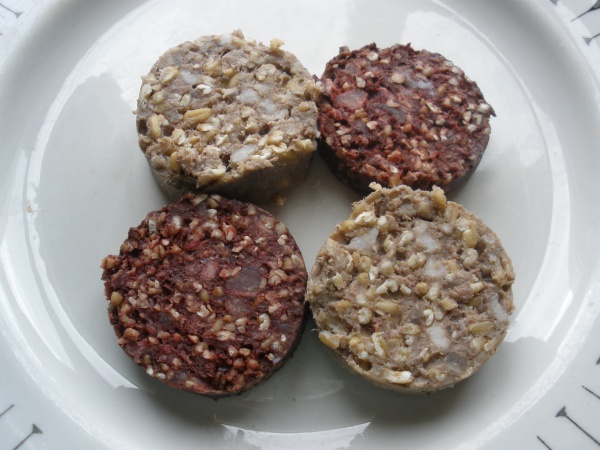Facts About White pudding
White pudding, also known as oatmeal pudding or mealy pudding, is a cherished traditional dish in regions such as Scotland, Ireland, Northumberland, Iceland, Nova Scotia, and Newfoundland. Unlike its cousin, black pudding, white pudding does not contain blood. Modern versions typically include ingredients like suet or fat, oatmeal or barley, breadcrumbs, and occasionally pork and pork liver, all encased in a natural or cellulose sausage casing.
The origins of white pudding likely date back to the medieval period. It may have evolved from sweetened dishes similar to blancmange or as a way to make offal more palatable by incorporating cream, eggs, and breadcrumbs. During Lent, meatless versions of white pudding were quite common. Older recipes often featured sweet elements such as raisins, dates, and spices, but over time, the use of offal and sweet flavors became less frequent.
In Ireland, Scotland, and parts of Northern England, simpler versions of white pudding were traditionally made with suet, oatmeal, seasoning, and onions, stuffed into sheep or cow intestines. Today, Scottish white puddings typically consist of oatmeal, onions, and beef suet, while Irish versions might include pork or pork liver and fat. These modern puddings are usually encased in synthetic casings and either boiled or steamed, with spices such as white pepper, nutmeg, and sage adding flavor.
White pudding can be cooked whole or sliced and then fried or grilled. It is a staple in a traditional Irish breakfast and often accompanies minced beef and potatoes in Scotland. There are also regional variations, such as Scotland's fruit pudding, which includes dried fruit alongside beef suet and oatmeal.
Historically, white puddings were also popular in southwestern England, particularly in Somerset. A variant known as hog’s pudding, made in Somerset, Cornwall, and Devon, is similar to white pudding but tends to be more heavily spiced.

 United Kingdom
United Kingdom